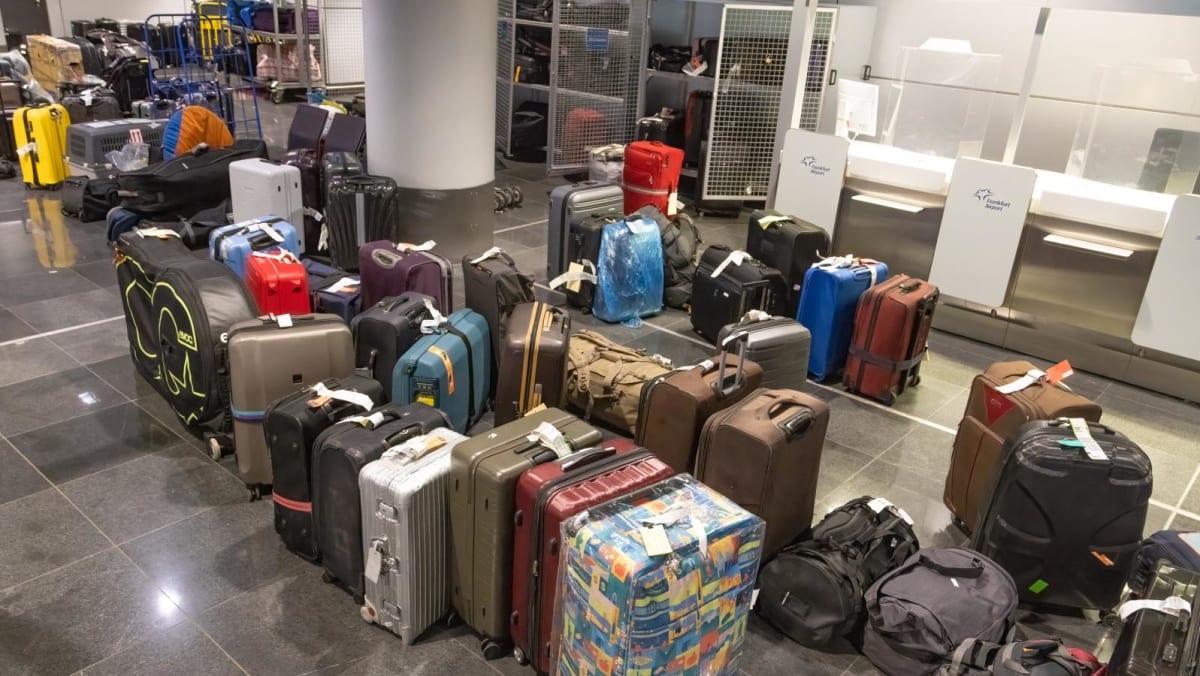SINGAPORE: Some passengers travelling on board Scoot flight TR134 from Singapore to Xi’an last week arrived in the Chinese city without their luggage.
The airline said it had to leave some bags behind before departure due to “unusually strong headwinds that impacted the performance of the aircraft”.
How does the weather affect the decision to offload luggage? How often does it happen? And are there other ways to manage the situation?
CNA spoke to four aviation experts to find out.
Why do airlines leave luggage behind?
Airlines may leave luggage behind due to poor weather or other operational considerations, to ensure that planes maintain proper weight in such conditions.
“Aircraft must maintain a proper weight and balance for safe operation. Poor weather can affect this balance, and removing luggage can help achieve it,” said Associate Professor Sameer Alam, the deputy director of the Air Traffic Management Research Institute at Singapore’s Nanyang Technological University.
Weight and balance calculations consider the weight distribution of passengers, luggage and cargo, he added.
“In the case of strong headwinds or other adverse weather conditions, the aircraft may consume more fuel than anticipated due to route deviation or due to (an) increase in thrust to maintain ground speed,” he continued.
“To ensure they have enough fuel for the journey, airlines may reduce weight by leaving some luggage behind.”
Former Singapore Airlines executive Chow Kok Wah said engines have to burn more fuel to fly the same mile if the plane is flying against strong headwinds.
“To overcome this, the plane will offload cargo … or offload some passengers or only their baggage. The aim is to save some fuel to fly further or fly harder,” he added.
Aviation consultant Alastair Rosenschein echoed some of Assoc Prof Sameer’s points, highlighting how conditions on departure can also affect the amount of weight that an aircraft can carry.
Hot air temperature at the departure airport, for instance, may cause a reduction in the maximum take-off weight, he said.
“Sometimes when the weather at the destination airport is poor, extra diversion fuel may have to be carried at the expense of payload (baggage, passengers and cargo),” he noted.
Mr Rosenschein added that high-altitude airports also call for reduced maximum take-off weights.
Other circumstances for luggage removal include aircraft maintenance issues, security concerns or passenger-related issues like late arrivals, said Assoc Prof Sameer.
Related:
Scoot removes luggage on Singapore-Xi’an flight due to ‘unusually strong headwinds’
Does the type of aircraft or the travel route matter?
In the specific case of TR134, the Asia managing editor of aerospace news website FlightGlobal Greg Waldron drew attention to the type of aircraft used for the flight – a narrow-body Airbus A320, according to data on flight tracker Flightradar24.
In travelling between Singapore and Xi’an, an A320 would be reaching the limits of its range.
“Xi’an is quite far north of Singapore, right? So … you’d already be getting to the (limit) of the aircraft range, effective range,” he said.
“Airlines, when facing extreme weather conditions like strong headwinds, that kind of thing, they have to be very cautious of the weight of the aircraft … basically you’re looking at the weight of the aircraft, and you arrive in Xi’an and you’re going to have to have a certain amount of fuel on the aircraft just in case you need to make a diversion and so forth,” he added.
Mr Rosenschein also discussed aircraft range limits, saying: “All aircraft have (a) maximum operational range which is determined by take-off WAT (weight, altitude and temperature) limits and inflight headwinds along with operational altitude for the flight which can be determined by the density of air traffic on the day.”
Mr Waldron added that a similar situation to what TR134 passengers experienced may not have happened on a flight between Singapore and a closer destination, such as Kuala Lumpur or Phuket.
Like Mr Rosenschein, Mr Waldron said that taking off from hot locations such as Singapore and Dubai is also a bit harder on aircraft compared to take-offs in, for example, northern Europe on a cool day.
In certain situations, airlines may prioritise cargo over luggage if the cargo is time-sensitive or critical, Assoc Prof Sameer said.
“The factors that lead to such decisions include the specific circumstances of the flight, aircraft type, weather conditions and airline policies,” he added.



